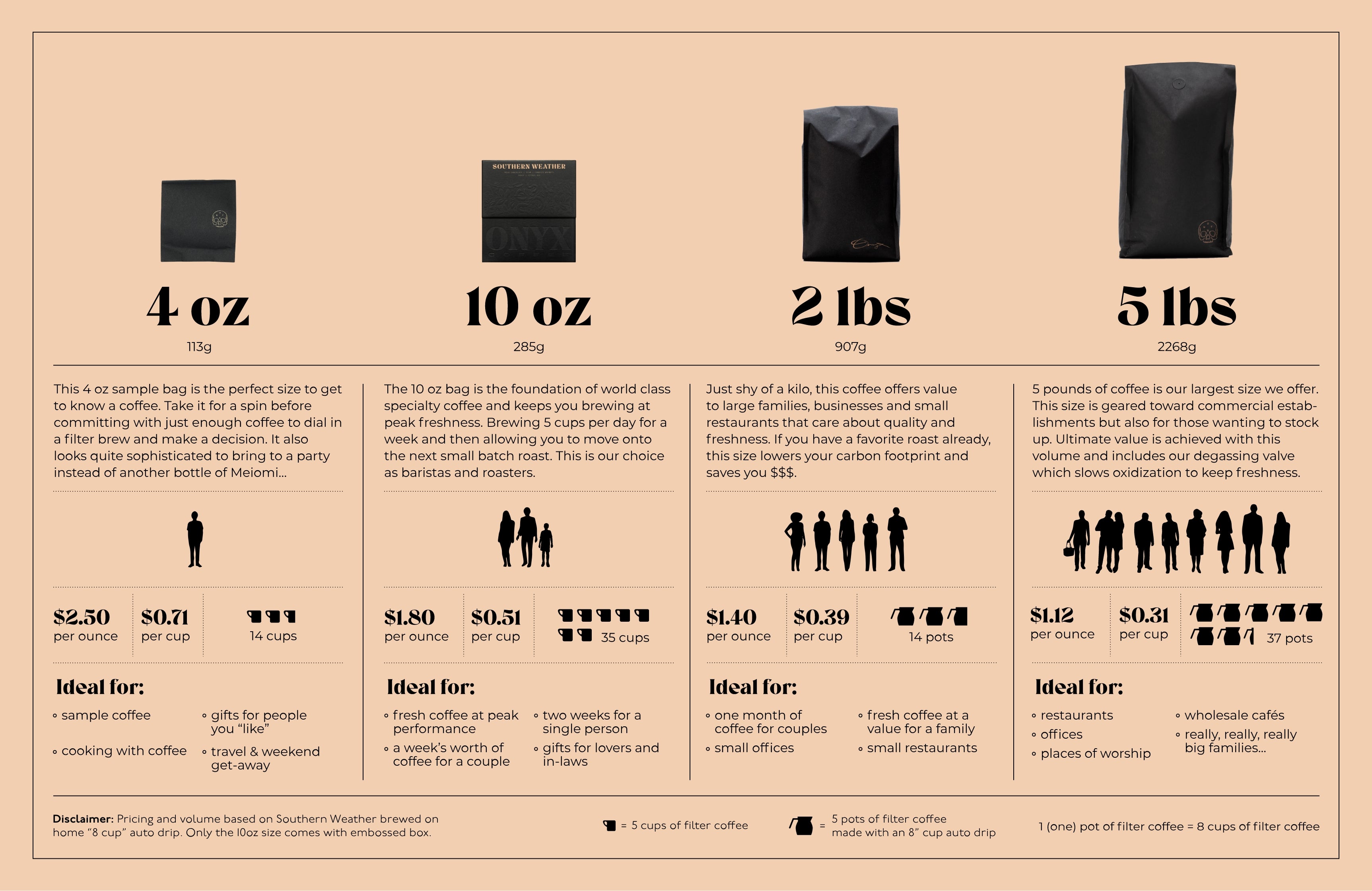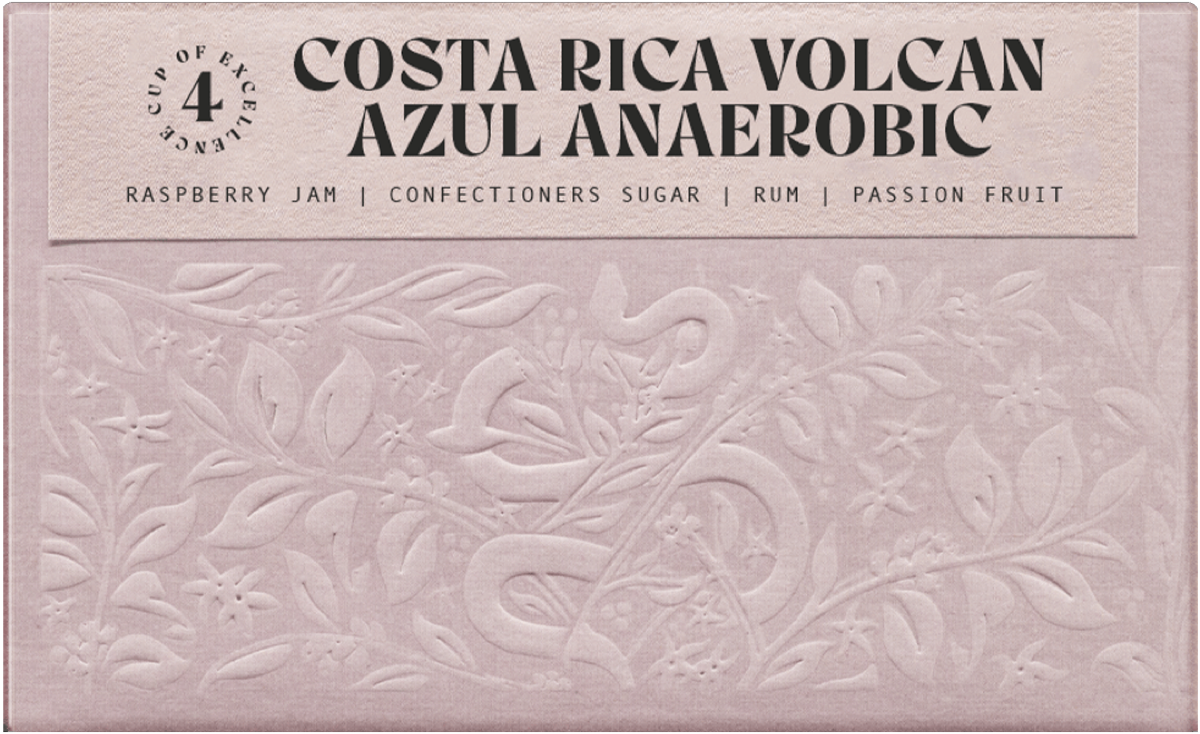Story
2020 is the first year that we’ve participated in the annual Cup of Excellence Auction in Costa Rica. After cupping through an intriguing set of the top ten COE selections, we honed in on this SL28 from Volcan Azul. On the cupping table, it exuded a depth of sweetness and tart acidity that reminiscent of raspberry jam and passionfruit. As the auction went underway, we were stalwart in maintaining the highest price paid for this selection. In the end, we won the auction for $32 per lb. Shortly after the auction ended, Alejo Castro reached out to us to supply more info on his family’s farm and the process this coffee underwent during production.
F.C.J. VOLCAN AZUL
“In the middle of the 19th century, when coffee production was in its early beginnings in America, without knowing it, two pioneers and entrepreneurs, Alejo C. Jiménez in Costa Rica and Wilhelm Kahle in the south of Mexico shared the same dream: “To produce the best coffee in the world” to satisfy the new demanding European gourmet market.
More than a century has passed and today the fourth and fifth generations of descendants of these visionary farmers still produce coffee within the same ideals of excellency and top quality that inspired their ancestors. They produce one of the best pure coffees of the world with its Brand “F.C.J. Volcan Azul” on the slopes of the Poás Volcano in Costa Rica.
Today, the production process starts with the planting of the coffee trees on highly fertile volcanic soil above 1400 Mts above sea level (SHB). It continues with a meticulous process at the coffee mill and finally ends with a strict preparation of the export qualities, which are roasted to reach the final consumer.
Nowadays, the descendants of Don Alejo C. and Don Wilhelm want to enhance further the principles of quality inherited by our founders by adding the value of conservancy of natural resources, through the acquisition of extensions of natural rainforest for its protection and conservation. These facts, not just words, are small actions taken by one family to reduce air contamination and global warming. This is the contribution we want to make to mankind, this is the new awareness we want to inherit to our future generations to inherit. For our family, the conservation of natural resources is of prime value, which is why we are committed to protecting vast extensions of tropical rainforest in Costa Rica since the ’80s. We have come to acquire over 1,500 hectares of rainforest for ecological preservation in areas where we grow our coffee as well as in the Osa Peninsula, a region in the South of Costa Rica is known for holding 2.5% of the Earth’s Biodiversity, proud to know that our family is contributing to reducing the effects of global warming. This is the attitude towards the environment that we want to pass on to our children and future generations of our family.” - Volcan Azul
ANAEROBIC PROCESSING
There are few leaps in the technique of processing coffee larger than the most recent trend of Anaerobic processing. This is oftentimes a technique of natural processing coffee, where whole cherries are fermented in a limited oxygen environment. The word Anaerobic is a catch-all term used more often than not to refer to a limited oxygen environment. Coffee cherries are subject to a pre-fermentation before they are moved to a drying bed or patio. The extended fermentation often adds a winey or fruity note to the coffee. Throughout the world, we’ve seen this practiced in many ways, from adding cherries into a clean grainpro and tying the top for the night, all the way to stainless tanks with an airlock on the top to slowly let out carbon dioxide caused by the microbes at work. There are many who are working to understand and better control this process to gain clarity on what is really going on with limited oxygen fermentation. Here is what Alejo from Volcan Azul says about their Anaerobic process:
“... Like all varieties we choose the right moment to start harvesting it, measuring Brix content. Then we bring the cherries to the wet mill where we separate floaters and wash the cherries so they are clean before going into the anaerobic tanks. In this case, we left the coffee five days inside the fermentation tanks, measuring temperature, Brix content, acidity (ph), and time. After this, it was taken to the raised beds for 11 days and then 8 hours in a mechanical dryer (Guardiola)”
CUP OF EXCELLENCE
Since 1999, the COE program has sought to connect developing coffee producers from around the world to roasters willing to pay a premium on their coffee. In each country that the Cup of Excellence takes place, thousands of coffees are vetted and put through one of the most rigorous quality panels a coffee can undergo. After dozens of industry-standard cuppers evaluate the coffee, a rank begins to form as scores are input and averaged out. This process yields a clear winning coffee, as well as a top-ten rank that will be auctioned off to roasters around the world. This auction process promotes higher premiums paid to farmers while operating on a transparency based infrastructure. These premiums paid to farmers motivate them to reinvest in the harvest, while also placing a precedent that they can be rewarded and recognized for a harvest of exemplary quality.
*Thank you to both the ACE and to Alejo Castro for supplying information to make this write-up (and coffee) possible.




